|
|
 When you regularly groom your cat it can help lessen hair ball problems and make the coat of your cat look more healthy and beautiful. Although there are cats that love being groomed, not all cats enjoy getting groomed as much as taking baths. If you are having a hard time grooming your cat then this article can help you make this task easier. You don’t have to worry when your cat is resistant to grooming because it still can be taught to enjoy grooming. The solution to make your cat enjoy grooming is to take advantage of cat’s cat’s natural enjoyment of human contact. Even a very aloof cat also enjoys petting. Here are some pointers to remember in order to make grooming session enjoyable for you and your cat. When you regularly groom your cat it can help lessen hair ball problems and make the coat of your cat look more healthy and beautiful. Although there are cats that love being groomed, not all cats enjoy getting groomed as much as taking baths. If you are having a hard time grooming your cat then this article can help you make this task easier. You don’t have to worry when your cat is resistant to grooming because it still can be taught to enjoy grooming. The solution to make your cat enjoy grooming is to take advantage of cat’s cat’s natural enjoyment of human contact. Even a very aloof cat also enjoys petting. Here are some pointers to remember in order to make grooming session enjoyable for you and your cat.
Reasons why your cat doesn’t want to be groomed:
- Your cat has sensitive part of her body
- Dominant personality
First, you need to know why your cat doesn’t want to be groomed. Just like us, pets can also be sensitive when there are parts of their body that they don’t wanted to be touched. Injury is another reason why your pet doesn’t want to be touched. That’s why it is advisable to check the body to see which part is too sensitive or has any injury. Once you know those areas then you can avoid those areas but still be able to groom your cat whenever it needs one. Groom your cat while avoiding its sensitive spots can you’re your cat think that grooming is pleasurable.
If you just got or adopted a new cat that hasn’t had that much grooming before. You can try to slowly work your cat to get it used to grooming. Giving your pet rewards after you grooming or brushing your cat’s coat is also a great idea to make your cat get used to the activity.
A cat with a dominant personally is another reason why it is reluctant to grooming. Cats with this kind of personality usually refuse to let anyone touch their head or other parts of their body which makes grooming really hard.
 As you can see, trying to know your pet more can make grooming much easier. Try to understand your pet more and figure out what irritates it and what makes it hate grooming. From there try to come up with ways on how to make your pet love grooming. Take note of things like how long your pet takes to get upset by your actions as well as your pet’s body language. You should stop when you feel that your pet is starting to get tense or irritated. This way, you can show your pet how pleasant it is to be groom without making it feel irritated with this activity. As you can see, trying to know your pet more can make grooming much easier. Try to understand your pet more and figure out what irritates it and what makes it hate grooming. From there try to come up with ways on how to make your pet love grooming. Take note of things like how long your pet takes to get upset by your actions as well as your pet’s body language. You should stop when you feel that your pet is starting to get tense or irritated. This way, you can show your pet how pleasant it is to be groom without making it feel irritated with this activity.
Additional tips on grooming your cat.
- Groom your pet before feeding it so you can use the cat food as a reward when your pet behaves well.
- If the pet wants to play with the grooming tools like the comb let him play with it. This will make your pet familiarize with your tools and will not be surprised when you start using it to groom him.
- Your pet can feel more at ease when you alternate comb brushes and stroking with your hand.
- You can also set your grooming sessions when your cat is most relaxed which is during afternoons.
- Pick the right tools for the job. There are specialized grooming tools available in the market that is specifically designed for your pets.
Follow these tips and advice and you can be sure that you and your pet will have a peaceful, enjoyable and stress free grooming session with your pet.
 You love your cat but you also love your home. Let’s face it, even the most compassionate cat lovers have probably Googled “declawing” at least once. Cats scratch – plain and simple. I do not intend to get into the merits versus the horrors of declawing your cat. I know people that have chosen both paths, and each feel equally positive about their respective decisions. However, if you have elected to leave your cat “intact”, as I have, here are some helpful ideas. You love your cat but you also love your home. Let’s face it, even the most compassionate cat lovers have probably Googled “declawing” at least once. Cats scratch – plain and simple. I do not intend to get into the merits versus the horrors of declawing your cat. I know people that have chosen both paths, and each feel equally positive about their respective decisions. However, if you have elected to leave your cat “intact”, as I have, here are some helpful ideas.
- Soft Paws. I believe there are other brands now available, but Soft Paws was the first I became aware of. Essentially, these are little plastic tips that are glued over the tips of cats’ claws. I tried them for a while with some success. The biggest disadvantage is the need to constantly replace them. Natural shedding of the nails, as well as wear and tear, will cause the tips to come off over time. For some people, the cost and hassle is not worth it. As well, depending upon the cat, you may need to do some “wrestling” when applying. If you go this route I recommend acquainting your cat with the Soft Paws at a young age.
- Protecting Plants. Kittens love to dig in house plants. I’ve seen some interesting products for protecting plants, ranging from repellent sprays to little fences and covers. My recommendation: go into your back alley or to a nearby riverbank and collect a bucket of medium sized stones. Lay the stones in the plant pot on top of the soil. Make sure the rocks are a sufficient size – little pebbles can still be dug up by a cat. The rocks actually look quite attractive and watering through them is no problem. The best part – it’s free! For those wanting a “higher end” solution, polished stones can be purchased at most craft stores.
- Furniture Protection. Cats love weaves. If you’re investing in new furniture I recommend considering non-porous fabrics. Alternatively, you can purchase pet throws at places like Costco. These blankets are thicker than typical furniture covers, providing better protection from claws.
- Repellent Sprays. Don’t waste your money. I don’t think they work.
-
 “A kitten is, in the animal world, what a rosebud is in the garden.”
– Robert Sowthey Scratching posts. Every cat should have something for the purpose of scratching. I have found that most cats are attracted to the cardboard scratchers (especially if they have catnip in them). Combination scratching posts/perches are a great investment because cats love to sit up high and look out the window. If you are constructing your own scratching post I have found that cats prefer the carpet to be attached inside out to the post. The weave of the backing is ideal for hooking their claws into.
- Nail Clippers. If you can train your cat (and yourself) to endure a nail clipping every so often it’s worth the trouble. The special scissors are available at most stores that sell pet supplies. You need to gently hold the cat’s paw and squeeze each individual toe to protract the claws. You are only aiming to remove the sharp tips, not to cut the claws really short. When you get an “accidental” scratch from your cat it will be less severe if they have had their claws clipped.
- When your cat starts scratching something “off limits” use a loud clap of the hands or a quick spray of water to startle them. They are trainable, and will respond if you are consistent.
- Pets bring a bounty of joy to our lives. A perfect home will not lie on your tummy when you have the flu. Learn tolerance.
 One reason I like indoor cats is that I can sleep better and worry less; if my cats were outside I’d be extremely anxious if they didn’t come in at night or suddenly didn’t show up at their usual entry hour. One reason I like indoor cats is that I can sleep better and worry less; if my cats were outside I’d be extremely anxious if they didn’t come in at night or suddenly didn’t show up at their usual entry hour.
Even though most cats have thick fur coat, they can still suffer from hypothermia, just like people, especially if they get wet and imagine with the wind-chill it can be even more frigid and dangerous for your cat!
Hypothermia in cats is clinically defined when the cat’s body temperature is at a maintained level of 37.7° C (100° F) or below. As their body temperature drops, their heart rate and other key body activities will slow down to a point that unless immediate care is provided to warm up the animal the heart could stop.
Make sure you keep the phone number of your 24 hour emergency veterinary clinic handy, preferably on your phone so you can get help immediately in any cat emergency. Of course if you have a cat that is suffering from signs of hypothermia the first aid for the cat should be your first priority.
Diagnosing Hypothermia Symptoms in Cats
Just like a person, a cold kitty will begin to shiver more and more violently in attempt to generate warmth through muscle spasms and rapid movement of tissue to help create warmth. Cat ears and paws will become noticeably cooler as the blood flow becomes reduced due to the cold effecting the circulation system.
If thee ears and paws get cold enough frostbite will begin to set-in. Frostbite in cats, just like in people, can be very uncomfortable and dangerous if the limbs or extremities become frozen as tissue and cell death can occur causing permanent damage or even require the amputation of particular body parts. Poor little dears!!
When a cat’s body temperature slips below the danger threshold, the breathing will become lethargic as heart rate slows. This combination is dangerous enough to lead to a potential coma in a cat.
Be careful in the winter as this is when most cases of hypothermia occur in cats and of course it can happen in warmer weather if the cat gets wet or submersed for long periods as water temperatures can be much cooler than air temperatures and wet fur provides little to no insulating protection for a cat.
From JC : What Can You Do If Your Cat Gets Cold?
“If your cat gets cold at night but won’t sleep on blankets, there are several other things you could try to keep him warm. You do, however, want to make sure your cat really is cold. I would think that he may not be cold at all if he does not want to sleep on a blanket. My cat’s have always curled up on blankets (as well as pillows, bathroom towels, clean laundry while I am trying to fold it) at every opportunity during the winter. During any season actually.
If you do indeed think your cat is cold, here are a few things you could try. First, you could try actually covering the cat with a blanket after he is already asleep. He may stay asleep and keep the blanket on.
If your can has a place he always sleeps like a throw pillow or a pet bed, you may be able to get away with filling a hot water bottle and either putting it under the cover on the pet bed or under the pillow if it is not too thick. If this will not work you could take an electric heating pad and use it to warm the bed for a few minutes. Just be sure not to leave an electrical device plugged in and on unsupervised or over night.
If your cat is an outdoor cat you could get a small doghouse to protect him some from the cold and wind, rain or snow. Putting an old bed pillow on the bottom for him to lay on. Some animals will not go into a doghouse if they are not used to having one. If this is the case, try having the cat watch you put a few treats or a pinch of catnip on the pillow. He should go right in for that, and will see that it is a warm, comfortable place to sleep.
If you have an indoor cat you could do something as simple as turn the heat up a few degrees or use an electric space heater to warm the room where the cat sleeps. Again, just be sure to turn the heater off and unplug it before you turn in for the night.
As a last resort, and I say last because I have found them very hard to get on, you might be able to find a sweater for your cat. I have seen them in large pet stores. I have found that sweaters are much easier to find for dogs than for cats. If this is the case for you also, a sweater made for a small dog should fit a cat just fine and they come in cute seasonal designs also!”
I’m not sure if I’ve known a cat to really enjoy wearing a sweater! I love seeing dogs wearing booties and sweaters or mini parkas during the winter in Canada but haven’t seen any cats walking around the neighborhood with matching snow boots and a fur-lined cat coat but I would sure love to see a photo. LOL!
My cats love to sit in warm areas and when we build a fire in the wood stove the cats usually gather around to keep warm and enjoy the radiant heat coming off the stove. If I did ever have an outdoor cat that came down with hypothermia from being lost outside during a storm or fell in a pond and got wet and started freezing I would carefully bring the cat close to a warm heat source but nothing too extreme.
Always keep the vets phone number handy just in case.
 Every cat has a different personal preference as to what flavor and texture of cat food they enjoy best. Whether beef, chicken, or fish, the dry and wet cat food you purchase should contain all the necessary nutrients to keep your cat happy and healthy. Feeding your cat the equivalent of junk food, just because it is their favorite treat, can be unhealthy and put your cat at risk for medical problems. Every cat has a different personal preference as to what flavor and texture of cat food they enjoy best. Whether beef, chicken, or fish, the dry and wet cat food you purchase should contain all the necessary nutrients to keep your cat happy and healthy. Feeding your cat the equivalent of junk food, just because it is their favorite treat, can be unhealthy and put your cat at risk for medical problems.
When deciding which cat food to feed your cat, be sure to check the ingredient list on the back of the package. If carbohydrates such as wheat are one of the first few ingredients listed, keep looking for a different brand of food. Carbohydrates don’t provide you cat with the essential protein it needs and acts as kitty junk food. Look for meat names in the first few ingredients such as beef, tuna, chicken, etc. Meat will help your cat get the protein and fatty-acids it needs daily.
Be sure to purchase food that is age appropriate for your cat. Special formulas for kittens, adults, and aging cats are available to meet their age group’s specific dietary needs. Feeding your cat food from the wrong age range can lead to an incorrect amount of the recommended vitamins and minerals in their diet.
Although many people feed their pets human food, it is recommended to only feed your cats cat food. Human food can be harder for cats to digest, lead to obesity, and cause behavior problems. Once you start feeding your cat food scraps it can very difficult to stop. Cats often like the way human food tastes better than their own food, so cutting them off can upset your feline friend.
Kitty treats for your cat should not be fed too often. While treats can be a great way to bond with your cat, especially as a reward for good behavior, they should only make up a small percentage of the food your pet consumes. Treats do not contain the nutrients your cat needs to keep a healthy mind and body.
If you feel your cat is underweight or overweight, be sure to consult your veterinarian for a diet plan to help get your pet healthy. The appropriate type, amount, and brand of food will help you cat stay happy and healthy for years to come.
 If you notice your cat doing weird things like hacking up hairballs, crouching like a jungle cat or wandering around with its tail in the air, don’t be alarmed. There are many cat behaviors that are completely normal and are part of its nature. If you notice your cat doing weird things like hacking up hairballs, crouching like a jungle cat or wandering around with its tail in the air, don’t be alarmed. There are many cat behaviors that are completely normal and are part of its nature.
Don’t be upset if your cat hacks up a hairball. Ever notice that your cats tongue is rough? That’s how cats clean themselves – they lick their fur and pick up bits of dirt and loose hairs. That hairball is made up of their own fur. While a hairball every once in a while isn’t a bad thing, if it’s happening more than once a month, your kitty may need to be brushed. Regular brushing can keep hairballs away.
If your kitty is crouching down like a lion and watching something carefully, that means that it’s about to pounce. If you watch closely, you might even see your cat do a “butt wiggle” right before it takes off! Cats like to pounce on things. Even if your kitty is an indoor pet that has never even seen a live mouse, its nature is to stalk and hop on toys or other animals. If it were outside in the wild, that’s how it would feed itself, but since your kitty is an indoor cat, that’s how it plays.
Your cats’ tail displays its moods. When your cat is happy, it walks around with its tail comfortably up in the air and it looks relaxed. If its tail is straight up and stiff, it might be alarmed about something – did you just make a loud noise or startle it? You’ll notice that when your kitty is crouching down and about to pounce, its tail is swishing from side to side. That is normal stalking cat behavior. An angry, upset or scared cat keeps its tail between its legs, almost like it is trying to make itself smaller.
The same thing goes for your cats’ ears. If its ears are back, that means your cat is angry. When its ears are straight up, he is happy and relaxed. Watch your cats ears – if he hears something in the distance, they will twitch back and forth. It’s pretty funny to watch!
|
|
 When you regularly groom your cat it can help lessen hair ball problems and make the coat of your cat look more healthy and beautiful. Although there are cats that love being groomed, not all cats enjoy getting groomed as much as taking baths. If you are having a hard time grooming your cat then this article can help you make this task easier. You don’t have to worry when your cat is resistant to grooming because it still can be taught to enjoy grooming. The solution to make your cat enjoy grooming is to take advantage of cat’s cat’s natural enjoyment of human contact. Even a very aloof cat also enjoys petting. Here are some pointers to remember in order to make grooming session enjoyable for you and your cat.
When you regularly groom your cat it can help lessen hair ball problems and make the coat of your cat look more healthy and beautiful. Although there are cats that love being groomed, not all cats enjoy getting groomed as much as taking baths. If you are having a hard time grooming your cat then this article can help you make this task easier. You don’t have to worry when your cat is resistant to grooming because it still can be taught to enjoy grooming. The solution to make your cat enjoy grooming is to take advantage of cat’s cat’s natural enjoyment of human contact. Even a very aloof cat also enjoys petting. Here are some pointers to remember in order to make grooming session enjoyable for you and your cat. As you can see, trying to know your pet more can make grooming much easier. Try to understand your pet more and figure out what irritates it and what makes it hate grooming. From there try to come up with ways on how to make your pet love grooming. Take note of things like how long your pet takes to get upset by your actions as well as your pet’s body language. You should stop when you feel that your pet is starting to get tense or irritated. This way, you can show your pet how pleasant it is to be groom without making it feel irritated with this activity.
As you can see, trying to know your pet more can make grooming much easier. Try to understand your pet more and figure out what irritates it and what makes it hate grooming. From there try to come up with ways on how to make your pet love grooming. Take note of things like how long your pet takes to get upset by your actions as well as your pet’s body language. You should stop when you feel that your pet is starting to get tense or irritated. This way, you can show your pet how pleasant it is to be groom without making it feel irritated with this activity.
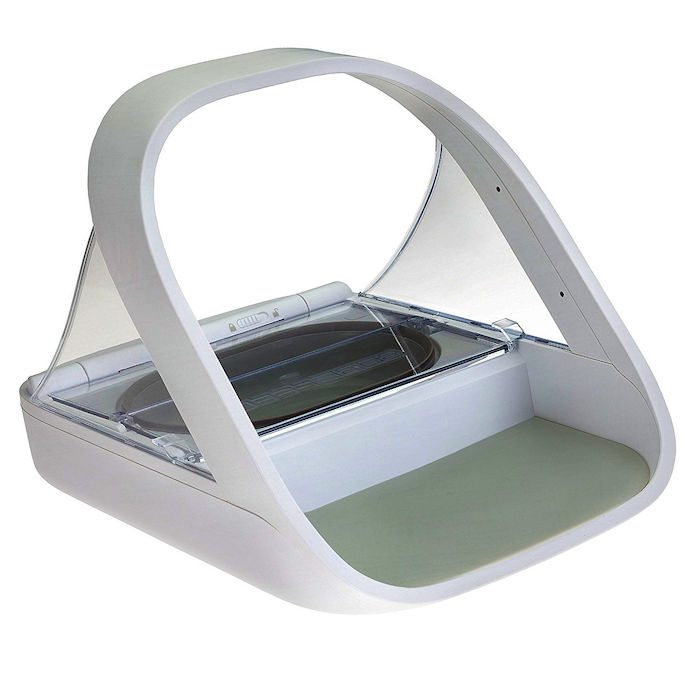

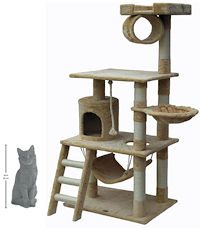
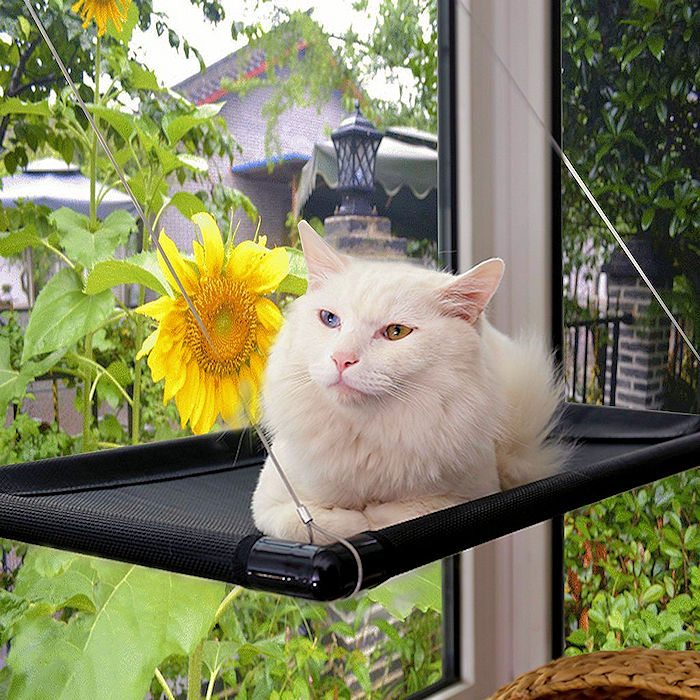
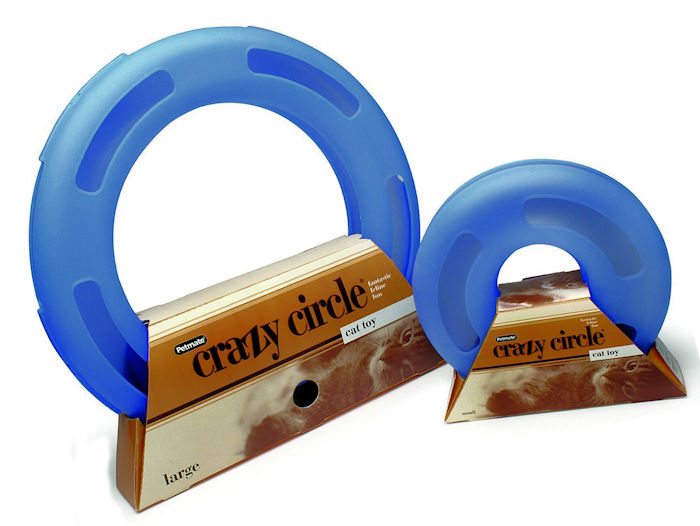
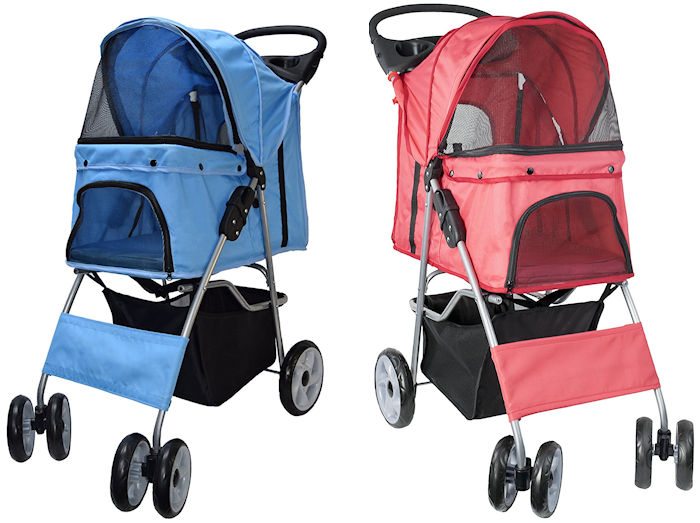
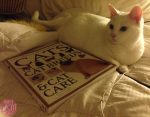


 One reason I like indoor cats is that I can sleep better and worry less; if my cats were outside I’d be extremely anxious if they didn’t come in at night or suddenly didn’t show up at their usual entry hour.
One reason I like indoor cats is that I can sleep better and worry less; if my cats were outside I’d be extremely anxious if they didn’t come in at night or suddenly didn’t show up at their usual entry hour. Every cat has a different personal preference as to what flavor and texture of cat food they enjoy best. Whether beef, chicken, or fish, the dry and wet cat food you purchase should contain all the necessary nutrients to keep your cat happy and healthy. Feeding your cat the equivalent of junk food, just because it is their favorite treat, can be unhealthy and put your cat at risk for medical problems.
Every cat has a different personal preference as to what flavor and texture of cat food they enjoy best. Whether beef, chicken, or fish, the dry and wet cat food you purchase should contain all the necessary nutrients to keep your cat happy and healthy. Feeding your cat the equivalent of junk food, just because it is their favorite treat, can be unhealthy and put your cat at risk for medical problems. If you notice your cat doing weird things like hacking up hairballs, crouching like a jungle cat or wandering around with its tail in the air, don’t be alarmed. There are many cat behaviors that are completely normal and are part of its nature.
If you notice your cat doing weird things like hacking up hairballs, crouching like a jungle cat or wandering around with its tail in the air, don’t be alarmed. There are many cat behaviors that are completely normal and are part of its nature.